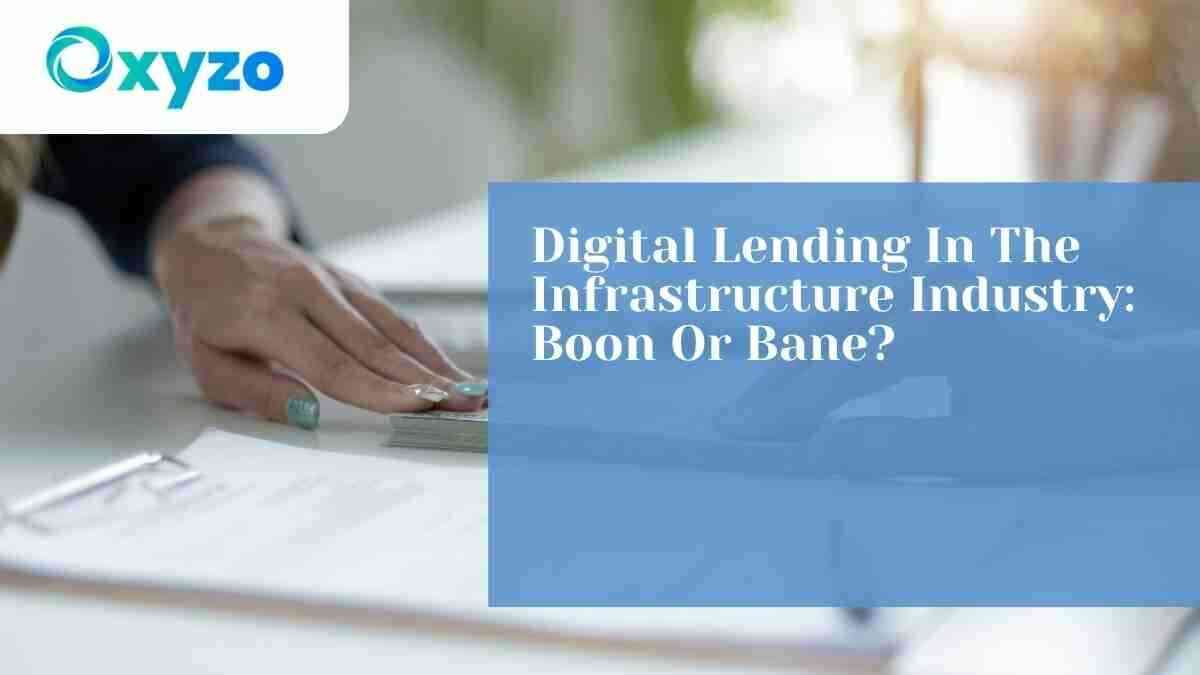Digital Lending In The Infrastructure Industry: Boon Or Bane?

The truth is that digital lending solutions like working capital loans, purchase order financing and other forms of ....
India’s lending landscape has witnessed a tech-tonic shift. Loans are being applied, processed and accepted via digital means. This has been providing ease of access to business loans with a quick processing time, minimum documentation and hassle-free funds’ disbursement. And many customers regard digital lending as a blessing in today’s world.
However, the readers cannot ignore the reasons that are making Fintechs appear on top headlines for wrong reasons like expensive loans, excessive service charges, high-interest rates, defaming defaulters, etc.
Well, the question here stands legitimately whether digital lending in the infrastructure is a boon or bane. The truth is that digital lending solutions like working capital loans, purchase order financing and other forms of business loans provide borrowers with an opportunity to improve their credit score. It depends on the user how the opportunity is used or meddled with.
The Fintech revolution has seen an enormous acceptance, especially during the pandemic that continues to be a blessing for most of the users post-pandemic too. With necessitated financial emergencies and restricted access to traditional financing options, Fintechs emerged as the digital lenders helping in the hours of need.
Here are some of the benefits of Fintechs and the challenges that are ahead of them.
Benefits
Quick loan disbursal:
Well, this is one of the most important reasons why Indian consumers are shifting to digital lenders for their loan requirements. As per a report by the Fintech Association for Consumer Empowerment (FACE), digital lending doubled in the financial year 2021-22 where loans worth nearly INR 18,000 crores were disbursed to 2.66 crore applicants.
Digitalization has reduced the turnaround time for a loan disbursal. Digital KYC has helped in reducing the time taken in customer authentication. Furthermore, Fintechs rely on technological help for assessing the creditworthiness of the applicants. They employ artificial intelligence (AI), data analytics, customers’ digital footprints, credit history, current financial standing and other forms of data analysis for the same. As a result, the turnaround time from loan application to its assessment to the funds' disbursal has reduced significantly making it a boon.
Seamless customer experience:
Digital lending solutions offer their customers not only a rapid turnaround time but are also more inclined towards providing a hassle-free experience. With traditional financial institutions, the borrower has to pay several visits to check on the progress of the loan application. Even with any objections, the person has to clarify them one by one in person which is not only time-consuming but also full of friction. And then, there is a large waiting period for the final credit decision.
On the other hand, digital lending solutions are free of stress where the borrower receives step-by-step guidance and that too on time. This makes it a comfortable experience. When one can avail of a seamless customer experience from the comfort of his home, why would he bother to turn to a traditional institution?
Challenges
Informal moneylenders:
With the growth of digital lending, many informal moneylenders and loan sharks have made their way into the market. RBI identified more than 600 informal money lending apps in 2021. The number is more than that of formal digital lenders.
One side of the coin displays the customer transition from traditional financing solutions toward digital moneylenders for quick and easy access to loans. But the flip side is that many low-income groups, SMEs and people who are either new to credit or are looking for unsecured loans due to lack of collateral fall into such traps very easily.
This is where digital lending infrastructure can hurt a borrower’s creditworthiness which can affect his future loan applications with trusted lenders. It is essential to keep a check on such informal lenders from disturbing the harmony of the lending ecosystem.
Harmful consumer behaviour:
One of the major challenges ahead of digital lending infrastructure is to tackle consumer behaviour. The ease of access to business loans can instigate harmful borrowing instincts in consumers. They may borrow more than they can repay. With the ease of getting loans in just a few clicks, one may intend to borrow more and also spend irresponsibly.
Conclusion
Undoubtedly, the benefits of user-friendly digital lending infrastructure outnumber the banes. It has turned out to be a blessing for most borrowers. However, in the long run, it is also essential to keep a close regulation on illegal entities deceiving customers in the need of small loans. Such entities can hurt the creditworthiness of innocent customers and can also misuse customer data. With close regulation and monitoring prudence in consumer behaviour, digital lending solutions can be the most convenient manner of financially including the underserved sector in thriving the economy.



